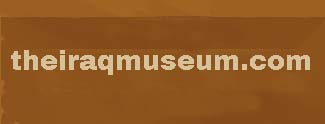About the Museum
The Baghdad Archaeological Museum was established with the help of the British author Gertrude Bell in 1926. In the 1920s the Museum was under the Ministry of Public Works while under the Ministry of Education in the 1930s. Its collections are considered among the most important in the world and the Museum has traditionally exhibited collections featuring the 5,000 year long history of Mesopotamia in its 28 galleries. The original buildings (Old Museum building, Administration Building, Library, and Old Storage Building) were built on the present site with the help of the German Government in 1964-1966 and opened in 1966. The New Museum Building was built by the Italian Government in 1983. The newest building, the New Collections Building, was built by Kortage Construction in 2006 sponsored by the Iraqi Government.
Recent History
The Museum was closed from 1991 during the Gulf War and reopened on April 28, 2000 for former President Saddam Hussein’s birthday. On April 8, 2003 the museum staff was asked to leave the Museum. Thefts of collection items took place on April 07-12, and staff attempted to hold back looters until U.S. forces arrived on April 16. The Museum's above ground storage rooms were looted but the exterior steel doors showed no signs of forced entry. Thousands of excavation site pieces (jars, vessels, pottery shards, etc.) were stolen, of which over 3,000 have been recovered. The thieves did not appear to be discriminating; for example, an entire shelf of fakes was stolen, while an adjacent shelf of much greater value was undisturbed. The number of looted collection items has been a matter of debate but Museum staff think about 15,000 items including 5,000 valuable cylinder seals were stolen. Many items that had been reported as missing had been hidden in secret storage vaults prior to the outbreak of war. Collection items from the New Museum Building’s exhibits remain in storage and will be returned to the Museum only after renovation of the Galleries and the spaces and cases are ready to accept the collections for exhibit.
Although the Museum has received protection since its looting, archaeological sites in Iraq have not had much protection, and there has been large-scale looting. This large-scale looting of archaeological sites has increased the workload for Museum staff, who often receive large quantities of undocumented artifacts confiscated at border crossings.
The Museum has been open on several occasions since the 2003. The Museum opened on July 3, 2003 for a visit by J. Paul Bremer, head of the Coalition Provisional Authority and opened in December 2008 for a photo opportunity announcing the return of some artifacts to the Museum. The latest Museum opening took place on February 23, 2009 with a ceremony involving Iraqi Prime Minister Nuri al-Maliki. The Museum has remained open since February for VIP tours and school groups.
Dedicated to the history and heritage of Iraq
The Museum is dedicated to the collection and interpretation of the history of Iraq and its environs. The collections consist of mainly man-made objects covering the past 7,000 years. The types of objects in the collection represent Sumerian, Akkadian, Assyrian, Babylonian and Islamic cultures and include objects made of glass, pottery, metal, ivory, and parchment, among others.
The Iraq National Museum is the only institution dedicated to protecting the comprehensive and collective archaeological heritage of Iraq from loss or destruction in order that it may be enjoyed and studied by the present and future generations of citizens and survive for additional thousands of years. If these collections are worth keeping as heritage source materials, the identity of each item must be guarded. Time and effort are required to keep accurate records and care for the collections, which are the Museum’s principal assets. The reason for preserving collections is to use them as a means of bringing enrichment and knowledge to as many people as possible. To do this, collections must be publicly exhibited and interpreted. The Museum plays an active role in the life of Iraq, by offering supplementary services including educational programming that encourages more frequent use of the artifacts that aid in the pursuit of new interests created by them.

